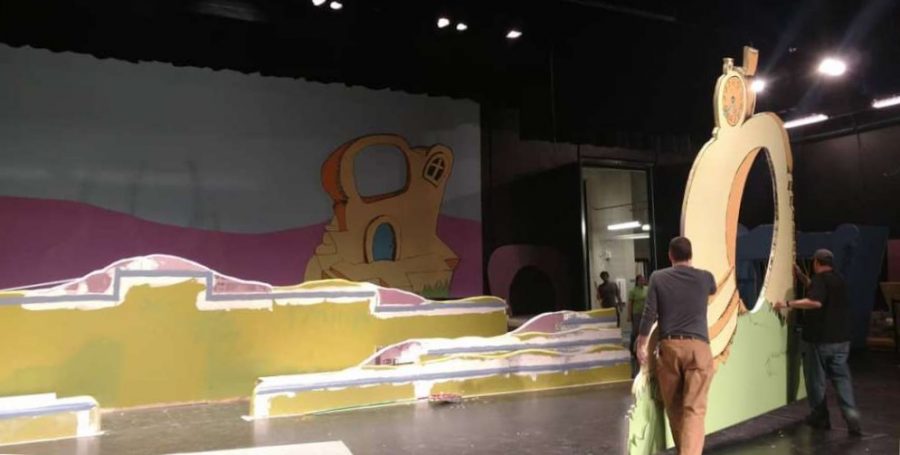‘Seussical’ tech crew: If you build it, they will come
Shakespeare wrote that “All the world’s a stage, and all the men and women merely players” in a monologue that went on to describe the roles a person acts. Like Shakespeare, when most people think of a musical, they focus on the action and music but don’t think about how the stage is created or how much time is put into the work.
Fortunately, set designers like Mr. Mike Schiestel do think about stages, and the work he put into last year’s Evita earned his tech crew an award from Broadway in Chicago.
Creation requires creativity, and that creativity requires time. The first step is brainstorming. The stage designers accept generally everything — “even the ridiculous” said Mr. Schiestel. In Seussical, the “ridiculous” includes cannons that shoot props into the audience and Seuss trees that look like they could fall over at any moment.
The stage designers usually begin their creation of the stage by sketching it out on paper. The sketch that is drawn is usually “rough and ugly” as lighting director Mr. Chris West puts it.
The sketch establishes the overall setup of the stage. Every single part of the stage is drawn individually afterwards. After the sketch is drawn on paper, it is drawn on a computer.
The time pressure doesn’t get easier from there. Mr. West estimates it takes 12 hours just to design where the lights are placed. The total process of designing and building the stage usually takes six weeks to two months to complete.
A set takes time, dedication, and a lot of nails to build. Mr. Schiestel has the team build each set from scratch because it gives the members of tech crew the experience of creating a set from nothing.
“Collaboration is the name of the game” when undergoing such a project, he said, and this continually shows in the sets and stage effects.
During the lengthy building time, the team needs to deal with situations that can be difficult or just plain weird.
“At Cary-Grove, we found out what happens if you work until midnight at the school,” Mr. Schiestel said of one such event. “All the lights shut off on us while we were working. We got quite the laugh out of that.”
Another challenging situation was when the auditorium was under construction, so the entire stage had to be set up in a small warehouse and then moved to Crystal Lake South.
Despite the hard work that each set requires, the directors treasure the reward of seeing it all come together. Mr. West had a hard time identifying his favorite stage that he built.
“That is a tough question,” Mr. West said. “I’d probably have to say the stage for Les Mis, which was really hard to design.” For that show, he designed the entire stage in two-point perspective. Two-point perspective is when a drawn 3D object has all of its corners go to a certain point, or shadow point. He drew the stage from a side perspective and made the corners all go in one direction, producing the effect of distance. It took several hours for Mr. West to design, which made him proud of it.
Mr. Schiestel chose to focus on the present when thinking about his favorite set.
“Mr. Petersdorff (another designer) and I get so embedded and bought in on every production that we have done, that we would have to say, the set we are working on is the best set,” he said.
After brainstorming, designing, and finally building the stage, the whole set is fleshed out and ready for the team to make numerous final adjustments. Then, the stage is ready to support the players in the spotlight, something Mr. Schiestel is fine with.
“Any production that is put on here at Cary-Grove requires thousands of hours of combined work between the students, production staff, and volunteers,” he said. “Seeing all of the work and collaboration come together into a great show is what draws me to doing this.”

